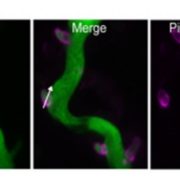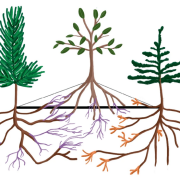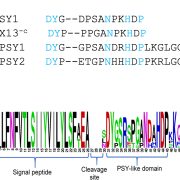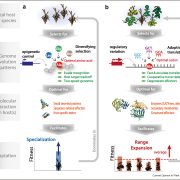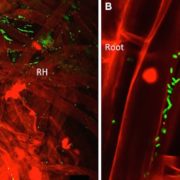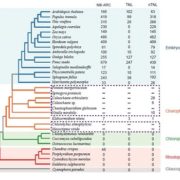Agarwood harnesses hornets for rapid dispersal of non-dormant seeds (Curr. Biol.)
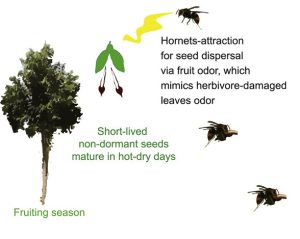 The seeds of the Agarwood tree (Aquilaria sinensis) lose viability within a few hours of the fruit splitting, so need to reach the ground as soon as possible. Qin et al. report that agarwood achieves this by fooling hornets (Vespa spp.), which generally eat herbivore insects such as caterpillars. When plants are attacked by caterpillars, they release various volatile organic compounds (VOCs) as danger signals. Hornets associate these VOCs with the presence of herbivore insects and get attracted to the source of the VOCs where they find and eat the caterpillars. The authors report that when agarwood fruit splits, it starts to release a similar set of VOCs that are released during caterpillar attack. Additionally, the hanging seed mimics a hanging caterpillar. The hornets, attracted by the VOCs, remove the seed from the plant and take them to its nest, generally on other trees. Hornets consume only the elaiosome (a nutrient-rich structure often found on insect-dispersed seeds) and drop the rest of the seed, often in the shade of other trees which facilitate survival and germination of these desiccation-sensitive non-dormant seeds. (Summary by Kamal Kumar Malukani @KamalMalukani) Curr. Biol. 10.1016/j.cub.2022.06.034
The seeds of the Agarwood tree (Aquilaria sinensis) lose viability within a few hours of the fruit splitting, so need to reach the ground as soon as possible. Qin et al. report that agarwood achieves this by fooling hornets (Vespa spp.), which generally eat herbivore insects such as caterpillars. When plants are attacked by caterpillars, they release various volatile organic compounds (VOCs) as danger signals. Hornets associate these VOCs with the presence of herbivore insects and get attracted to the source of the VOCs where they find and eat the caterpillars. The authors report that when agarwood fruit splits, it starts to release a similar set of VOCs that are released during caterpillar attack. Additionally, the hanging seed mimics a hanging caterpillar. The hornets, attracted by the VOCs, remove the seed from the plant and take them to its nest, generally on other trees. Hornets consume only the elaiosome (a nutrient-rich structure often found on insect-dispersed seeds) and drop the rest of the seed, often in the shade of other trees which facilitate survival and germination of these desiccation-sensitive non-dormant seeds. (Summary by Kamal Kumar Malukani @KamalMalukani) Curr. Biol. 10.1016/j.cub.2022.06.034


